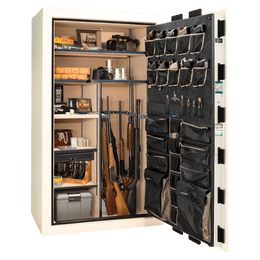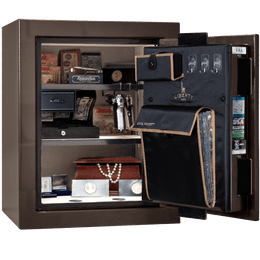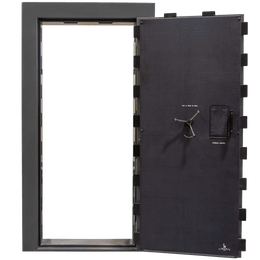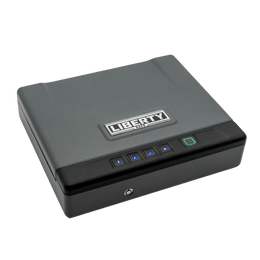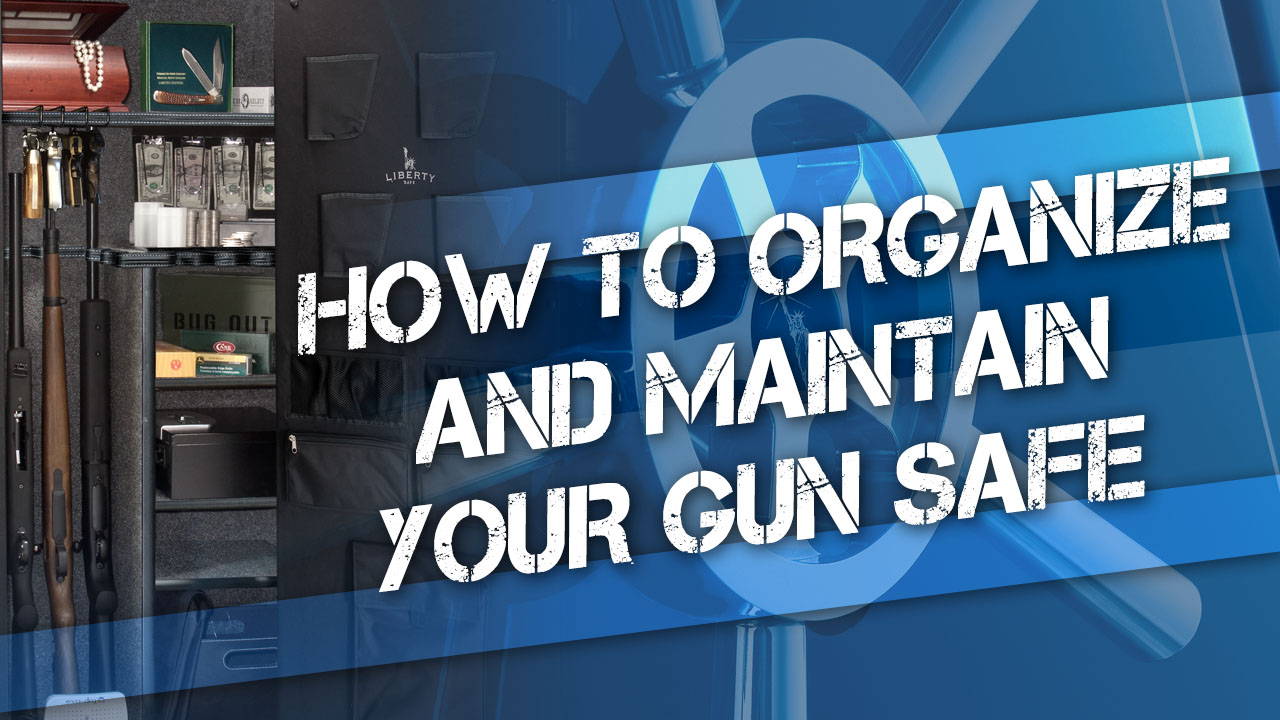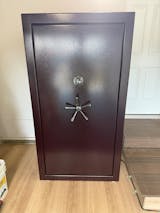We often tell people who are considering buying a home safe or gun safe to buy the largest safe they can afford. Why? Because even if you only have a couple of guns or other valuables to keep secure, once you see the value of a good safe, it tends to fill up quickly.
In this article, we’ll go over the reasons you should keep your safe clean, organized, and well-maintained, as well as point you toward some useful tips and products to help get this done.
Why it’s important to keep your safe well-organized and maintained
One question you might ask is, “Why should I even worry about maintaining and organizing my safe?” This is a fair question. Let’s go over three key points:
Safe maintenance is essential for proper function and long life
It might help to think about a quality safe the same way you might think about a quality car. It’s made of metal, paint, heat resistant materials, mechanical (and possibly electronic) parts, and typically has a carpeted interior.
While of course the intended use and complexity of a modern automobile and a home or gun safe aren’t comparable, both are mechanical devices that require regular cleaning, maintenance, and the appropriate use of lubricants in order to provide maximum life and functionality. You wouldn’t buy a nice Porsche or BMW and then neglect to change the oil or maintain the interior and exterior surfaces, would you? We hope not!
So the first and most important reason to keep your safe properly maintained is to ensure that it continues to work as designed for a long, long time. (See below for cleaning and maintenance tips for your safe.)
A well-organized safe holds more stuff
Anyone who has played Tetris, filled up a shopping cart at Costco or conducted a closet clean-out and organizing activity will attest that organization optimizes capacity. If you keep your safe decluttered and well-organized, and only store items that are truly valuable to you or are irreplaceable, you’ll leave yourself with a lot more useful room inside.
In addition, by properly organizing your items with the most-accessed items at the front and the rarely accessed items at the back, you will more easily reach the stuff you want, when you want it, without having to unload everything every time.
Aesthetics
We take pride in the appearance of our safes, and many customers consider a premium gun safe to be an item of beauty that can enhance their interior home decor. If a safe is covered in fingerprints, dust, and cobwebs, it becomes more of an eyesore than a beautiful, functional object of industrial art.
Accessories for gun safe organization
While there are some general tips and techniques for optimizing gun safe organization (which we’ll cover below), there are some gizmos and gadgets that can make life a lot easier. Let’s have a look at some of our favorites.
Gun holders
For handgunners, one of our favorite items for safe organization and maximizing storage space is Liberty’s Handgun Hangers. These innovative, made-in-the-USA pistol and revolver hangers slide onto either the front or back of your safe’s shelves (as long as they’re between 5/8 inches to 1 inch thick and at least 10" deep) and feature vinyl-coated steel barrel rods that “hang” your handguns below the shelf (or hold them vertically with the muzzles facing the back edge of the shelf), freeing up shelf space for other items.
Handgun Hangers are available in “back under,” “back over,” “under shelf” (front edge), or “under/over” variants (with both an under and over rod on the same hanger), as well as in the new “carry optics” models with extra room for optical sights.
These space-saving devices fit all handguns with .22 caliber or larger bores, up to 10” in overall length.
Rifle Rods are hugely valuable in maximizing long-gun storage in a crowded safe. These 16” long, bore-safe rods have a section of velcro at the top (and the kit comes with the appropriate sheet of adhesive velcro to place under any non-carpeted shelving) allow varying heights of guns to be organized, even in cabinets, closets, or other storage spaces if desired.
Rifle Rods work great with scoped firearms, double barrels, even shorter/SBR-type guns. Standard rods are for .22-caliber and up, but .17-caliber rods are also available, as well as additional add-on kits for adding more rods as your long gun collection grows.
For versatile storage on smaller shelves or in situations where the Handgun Hangers aren’t ideal, Liberty offers a 4-gun Pistol Rack. This vinyl-coated steel rack sits on any flat surface and holds up to four handguns over a versatile slide-out drawer, useful for ammo, accessories, magazines, or other items. Designed to allow access to handguns and accessories in seconds, the Pistol Rack won’t scratch your guns, and is another way to help you maximize your usable safe storage area. (Note: the Pistol Rack won’t fit the Liberty Centurion 12 safe.)
For a “classy” alternative to metal pistol racks, Liberty’s solid oak 8-gun pistol racks are a great choice. Each rack comes fully finished, and lined with either silver or beige pin-dot velour to protect delicate barrel finishes.
Have you ever leaned your gun against the corner of a doorframe or the side of your safe, only to have it fall over? The new Magnet Gun Caddy is a great solution, and also allows ready access to firearms that you don’t need to be stored inside your safe, whether temporarily or permanently. These magnetic gun holders attach to the side of your safe (or any magnetic surface) and prevent the gun from tipping over or sliding. They works with most guns, won't scratch paint or barrels, and have a patented design that actively holds the barrel for peace of mind.
Magazine mounts, holders, and racks
If you have a lot of semi-automatic (or full-auto, you lucky dog) guns, you know that magazine storage can eat up a lot of space inside your safe and create a lot of clutter. Keeping your magazines properly stowed can be a lot easier if you have the right accessories.
Liberty’s MagMount is a self-adhesive magnetic wall mount (with optional tacks or screws for mounting elsewhere) that allows you to store your metallic/magnetic magazines on the safe door, walls, or even under the shelves! Works with most magazines (as long as they attract a magnet) and can keep your magazines out of the way but still ready for easy access when you want them.
If you have an AR-15 (or several) you probably get tired of your AR mags falling over in your safe like dominoes, scratching your guns, or just generally being in the way. Liberty’s AR-15 Magazine Holder is the perfect solution for storing your AR magazines, and the design works for polymer magazines like the Magpul PMAG and similar. This convenient safe storage solution is designed to provide you quick access to your mags while keeping them clean and organized. They even work with “ranger plates” in place on your mags.
Liberty’s MagMinder magazine hanging racks are another innovative storage solution to help you organize your magazines in your gun safe and free up room. These USA-made, vinyl-coated steel racks work similarly to the Handgun Hangers, but in this case pistol or rifle magazines with flared-out basepads (like PMAGS, Glock mags, SIG P320 mags, H&K mags, etc.) are hung upside down from the rack below a shelf for easy access.
Liberty’s Mag Holder magnet kit is a simple way to add magnetic magazine holders to the inside of your safe (or any other surface)! These high-strength magnets are easy to install with the included hardware and won't affect the finish of your guns.
More tips for gun storage inside your safe
Opinions vary about the best way to store firearms inside gun safes, but almost everyone agrees that leather holsters and gun cases are not ideal for long-term storage, as they can store moisture and may contain corrosive tanning chemicals that can accelerate rust. For best results firearms should be thoroughly cleaned, and then either waxed with something like Renaissance Wax, or kept lightly oiled or treated with an effective anti-corrosion surface treatment.
Some people like to keep guns in silicone-impregnated anti-rust “gun socks” inside their safes, and these can be useful in preventing rust as well as dings from guns knocking against each other inside the safe when you’re moving things around.
Oily or greasy or dirty firearms should never be placed directly on the carpeted surfaces of your safe’s interior, as those stains can be very difficult to remove (and the chemicals in gun oils and solvents might react with the material in the fabric and impact your firearms’ finish). We’ll go over safe cleaning tips below.
Ideally, your safe should be kept at an appropriate humidity level to help prevent rust, but not so dry that it causes damage and cracking to expensive wooden firearm stocks. Most people recommend keeping your gun safe between 30 and 50% humidity at 70 degrees Fahrenheit. If you live in an area with higher humidity, you should definitely invest in a safe dehumidifier.
There are some other concerns you may not have thought about. On shotguns and rifles stored for long periods muzzle-up, rubber, foam, and/or leather buttpads may compress over time and “take a set.” In addition, gun solvents and lubricating oils used too enthusiastically on a firearm’s action can seep down into the buttstock wood, and actually can ruin it over time. So you might consider storing some (or all) of your guns muzzle down, or rotating them each time you take them out to examine them for signs of corrosion.
Some firearms, like fine over-under shotguns, are recommended to “dry fire” their internal hammers before storage, to prevent damage to their action springs. Check with the manufacturer to see if they recommend “snap caps” to prevent damage to the firing pins. There are even “wooly” snap caps that can help absorb excess oil as well as preventing flash rust in the chambers for storage.
Gun safe organization tips
As we mentioned above, items you need to access more regularly should be stored in the front portions of the shelving, and this goes for firearms as well. Collector guns you don’t plan to handle or access often can go along the back, with the firearms you need to access more regularly for hunting, competition, recreation, or sporting use stored along the front racks and shelves.
Whether you wish to store your ammunition inside the same safe as your firearms is a personal choice, but some experts as well as local fire ordinances may recommend you store ammunition over a certain amount, as well as any reloading powders in excess of 20 pounds, in a wooden cabinet or in some cases a designated “powder magazine” away from your primary residence. Check your local laws for specifics.
If your collection has gotten to the point where you’re having a hard time deciding which guns need to be stored in your safe and which guns will have to be kept in a cabinet or closet instead, it’s time to buy another (probably larger) safe, in our view.
Gun safe maintenance and cleaning tips
Let’s go over how often you should examine and clean your safe, as well as provide some helpful tips.
How often should I clean my safe?
Some safe dealers may recommend you clean your safe once a month or even more, but the frequency of cleaning depends on a few variables, including how often you access the safe, the contents of your safe, the humidity and environment in the area you use your safe, the dust and other particulates in the air, the natural acids present in the users’ particular skin, and other factors.
Firearms collectors living in very humid areas may wish to remove all of their guns and inspect them on a monthly basis, or every 3-6 months if it’s not very humid where you live. This not only allows you to stay on top of any rust that may be starting to form or progress, but emptying your safe is a great opportunity to clean and reorganize it if necessary.
A business safe that is stored in a busy area and that may be opened several times a day, potentially by multiple users and/or in a dusty environment, will obviously need more attention and cleaning than a home safe that might be opened only a few times a year.
Tips on cleaning the exterior of your safe
The basic rule here is to use a duster or a clean, soft cloth to remove loose dust and particulates first, and then use very mild soap, or potentially only a damp microfiber towel, to wipe off any fingerprints or other contaminants on the painted exterior of your safe.
Keep solvents, paint/metal polishing compounds, buffers, degreasers, and similar compounds away from your safe. Definitely don’t apply any soaps or harsh cleaners to the silkscreened logos or decals on your safe, and don’t rub them or try to polish them, as they can be damaged.
Be careful to avoid getting water into the dial or digital keypad area of your safe, or into the hinges. Don’t use a soaking-wet cloth to wipe down your safe. Don’t try to polish the dial or handles of your safe with any chemicals or compounds, as this may remove protective coatings and actually accelerate finish wear.
If kept clean, the shiny, painted exterior surfaces of your safe will likely not need anything like carnauba wax, but if desired, this is appropriate. Be sure to keep wax away from screened or printed logos and decals. Note that a “flat” or “matte” finished safe exterior should not be polished or waxed, but rather simply kept free of dust using the recommendations above.
Tips for cleaning your safe’s interior
The best practice here is to avoid leaving the safe door open for long periods, and to store all contents properly to avoid getting the interior of your safe dirty in the first place. Books/paper items, currency, and precious metals should be stored in acid-free, non-reactive covers, and as we mentioned above, firearms shouldn’t be placed with their oiled/greased surfaces directly on the carpeted interior of your safe. Oil and grease stains can be difficult or impossible to remove.
If you find your safe’s interior has become dusty or dirty, here are some tips for cleaning:
- Remove all your safe’s contents as well as any movable shelving so you have full access to the interior carpeted surfaces.
- Vacuum all the surfaces, with particular attention paid to the corners, and make sure the bristles of any brush or nozzle you use are very clean. If you use a nozzle or brush that previously vacuumed an oily/dirty surface, for example, you may inadvertently transfer some of that contaminant onto your safe’s interior.
- After vacuuming out any loose dirt or dust, use a clean, lint-free microfiber cloth to wipe off any areas that may need extra attention. If absolutely necessary, a mild soap and water solution may be blotted on with the cloth, and blotted off with a different, new, clean cloth.
- Be very careful to avoid soaking any areas (excess moisture inside your safe is bad), and allow the area to fully air dry before reinserting the shelving (if applicable) and contents of your safe.
- Never use carpet cleaner or other strong solvents. The fumes or liquids may be corrosive and harmful to guns, electronics, or other valuables.
- Make sure to keep water, soap, etc. well away from any dehumidifiers, lights, or other electronics in your safe.
Tips for maintaining the locking mechanism, dial, hinges, and handle of your safe
For weekly/monthly cleaning and maintenance, we recommend you just wipe down the handle and dial of your safe with a clean, soft, lightly damp cloth. It is probably unnecessary for non-professional users to lubricate the hinges (done improperly this can get messy), and only a professional should be looking at the internal dial and locking mechanisms.
We recommend having a professional examine and lubricate your safe’s locking mechanism, hinges, dial, and handle once a year, even if you don’t open your safe very often. Lubricants can congeal and harden over time, and the internal mechanisms of your safe need to be kept clean, with fresh, lockwork-approved lubricants applied. It’s a lot cheaper and less hassle to have a professional lubricate and maintain the lock and dial of an open safe than it is to hire a professional to try to open a stuck-locked safe with a gummed-up dial or lock mechanism.
See our article for full details on how to clean and polish your safe.
Get the best safes and accessories at Liberty Safe
These techniques and gun safe accessories can help you keep your safe clean, organized, and well-maintained. As far as which safe you should choose, we recommend a USA-made Liberty gun safe. Even if you have a safe (or more) already, once you fill up one safe, we’ve found you can always use another… and it may as well be the best!


